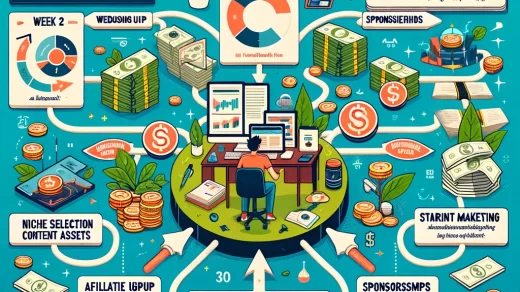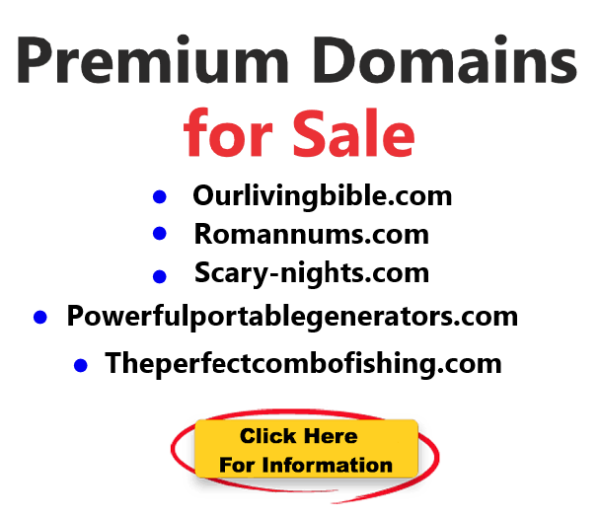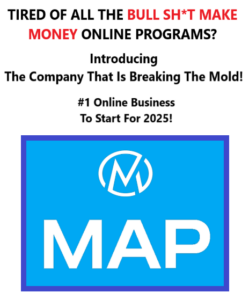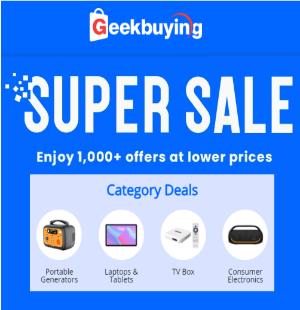There are three times as many email accounts as there are Facebook and Twitter accounts combined. What about the fact that email click-throughs are 6x higher than Twitter click-throughs?
According to research, email has one of the highest ROIs of any marketing channel. Email is a powerful tool for driving sales and revenue for your business, and I’m sure you’re eager to start using it today. People often ask the following questions:
- How exactly do I get started?
- What are the steps I need to take?
- How do I build a list?
- How do I measure success?
My goal with this report is to help you start and grow your email marketing business.
The first step in email marketing is to establish your goals
You may be tempted to sign up for an email marketing program like
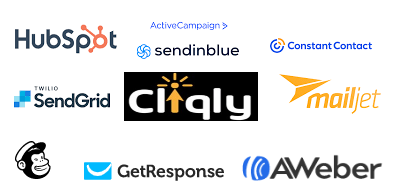
Take a minute to think about your goals and what you wish to achieve with email before jumping in head first, as those goals will determine what type of campaigns and programs you send, who you target, what content you include, and how you measure success. Make sure you do your research to find out which program is right for you. Sending emails can get very expensive.
The programs listed above can be used to send emails directly to your list or to send bulk emails to cold markets. Both can make you a lot of money if used correctly.
Due to its effectiveness in driving conversions and building brand loyalty, email marketing should be part of every digital marketing strategy.
It’s important to think carefully before getting started with email marketing since it can be used to achieve a variety of objectives.
Programs help you build campaigns tailored to every subscriber, from personalized subject lines to dynamic content.
In order to establish the best goals for your email marketing campaign, you must align them with the wider marketing goals and KPIs of your company. Are you trying to drive more sales or leads from your website?
The Best Way to Build Your Email Marketing List
After you’ve determined what you want to achieve with email marketing, it’s time to build your mailing list.
Your email list can be built in a variety of ways, but the right method for each campaign will depend on its goals.
A list of known contacts can be imported
A lot of your email list can be built by importing your existing customers’ details into your selected email marketing tool if you intend to keep in touch with existing customers through email. You can also purchase a list, in any size and niche. Do a search for (email list for marketing) and you’ll find many sellers. For example, dataaxleusa.com.
Create an entirely new list
You’ll have to start capturing email addresses and build your list from scratch if you want to communicate via email with an audience whose email addresses you don’t already have.
Building an email list organically can be accomplished in a variety of ways:
- Use Forms. …
- Use Lead Generation Offers. …
- Simply Ask People For Their Email Address.
- Offer Freebies. …
- Use Social Media. …
- Create Free Bonus Content That Is Worth Paying For. …
- Add A Signup Button To Your Facebook Business Page. …
- Create A Blog & Offer A Subscription.
“A valuable incentive + simple subscribe opportunities = large email list”
How do you make subscribing to your list super easy and simple? What makes for an amazing incentive?
If you have good content, upgrade offers, or give something free, you’ll definitely see an improvement in conversions.
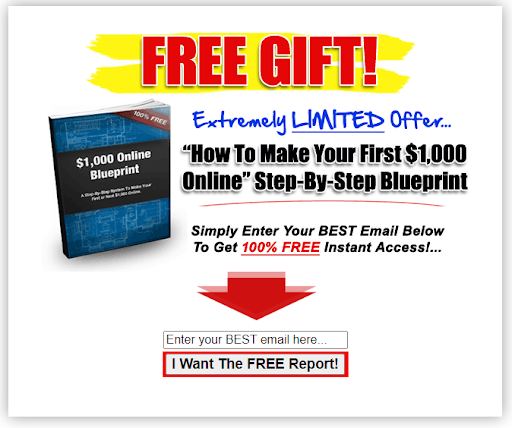
It is easy to build a new audience for your email marketing campaigns by following the email list building formula mentioned above and pairing a valuable incentive with prominent subscription options.
Lightboxes
Despite being viewed by some as intrusive and annoying, countless studies and tests have shown pop-ups can be effective. Here are a few things you need to do to create an effective pop-up opt-in that doesn’t turn off your audience:
- The right value offer
- A strong call to action
- Timing
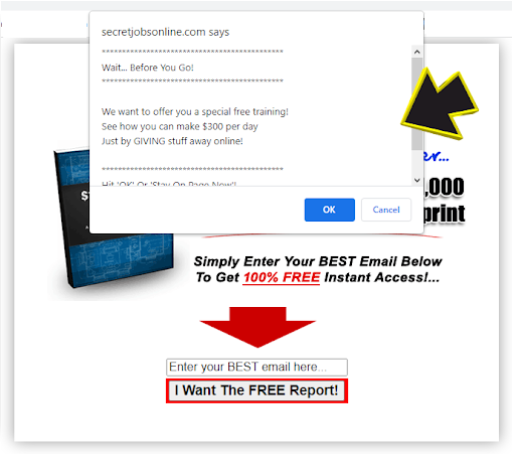
It is essential to pay attention to timing. A pop-up opt-in that appears after a visitor has finished reading an article or has scrolled 3/4 of the way down is much more likely to convert than one that appears on every page of the site.
There are some sites that only show lightbox opt-ins when the user shows exit intent (moves the mouse cursor outside the browser domain). Neil Patel, a New York Times bestselling author, tested opt-ins with exit intent and saw a 46% increase in conversions.
Test different lightbox opt-in messages and timings to see what brings the highest conversions.
Choose the type of email campaign you’d like to send
Depending on the goals you set at the beginning, marketers like you can choose from a variety of email campaigns to send to subscribers.
Here’s a look at how different types of campaigns can help you with email marketing.
Newsletter
An email newsletter is a regularly distributed email campaign that is generally about one main topic of interest.
Newsletter campaigns are the most effective way to keep in touch with people you already know (existing customers). Your business and products will remain top-of-mind, which will encourage more visitors to your site.
Marketing Offer
A marketing offer email is essentially any campaign you send with the goal of driving a direct response.
When it comes to driving sales directly through email, marketing offer emails are effective. You present a discount or product offer and include a direct call to action for people to make a purchase.
Announcement
A campaign announcement is an email to keep an engaged audience (i.e. existing customers) informed about your new products or features with an announcement email. The primary purpose of the email is to share information, but the email may also drive people back to your store or website.
Event Invitation
An event invitation email is a campaign designed to increase awareness of your event and encourage people to attend.
You should send specific types of email campaigns based on your goals with email. In order to drive direct sales, you should send marketing offers and announcements, but if you want to keep current customers informed of your latest projects, products, or company developments, you should send a regular newsletter.
How to create your first email marketing campaign
Now that you’ve decided on your goals, built a bit of an audience, and selected the type of campaign you’re going to send, it’s time to start building your email.
Structure your campaign for easy reading
Research shows that an adult’s attention span is, on average, eight seconds. With such a short attention span, you can assume people aren’t closely reading your campaigns word for word and are instead scanning through them looking for something of interest.
Email campaigns that are long and text-heavy aren’t ideal. Your message should guide readers towards your call to action while capturing their attention.
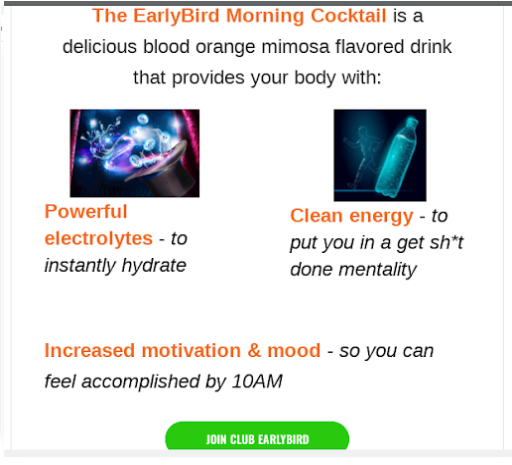
Engage your audience with images and visuals
Video and images are more eye-catching than words, plus they help your content stand out and are easier to remember.
In fact, studies have shown that people can recall as much as 65% of visual content up to three days later compared to just 10% of text-based content.
People also follow visual instructions 32% better than written instructions, so it’s a good idea to use visuals when directing your readers to take the desired action.
Make Your Email Campaigns More Personal
When surveying marketers, It was found that improving email personalization was the number one goal for 38% of marketers and was also the number one challenge for 36% of marketers. Email marketing automation, segmenting your lists, and using third-party integrations make email personalization easier and more effective.
You’ll get the best response from your readers when you create content tailored to their interests. Start by putting their name in your subject line, then segment your list to maximize engagement (more on that below).
Make sure each subscriber’s campaign is relevant
You should categorize your subscribers into different list segments even in the early stages of growing your email list. In order to maximize response rates, you need to be able to customize content so that it is more relevant to certain groups. By using list segments, you are able to choose what type of content to send to which subscribers.
This kind of targeted optimization is much better than sending blanket emails to everyone.
Why does email list segmentation matter?
We know that beyond relevancy, list segmentation is important from a revenue perspective. Data from the DMA indicates that segmented and targeted emails generate 58% of all email revenue. On top of this, our research found that marketers who used segmented campaigns noted as much as a 76% increase in revenue–and more than 76% of marketers say basic segmentation is part of their email marketing strategy.

To increase click-throughs in your campaigns and plan more targeted content based on those segments, you can create the following segments:
- Geographic location – useful for promoting store-specific information and targeting specific markets while ignoring out-of-location subscribers where the message wouldn’t be relevant.
- Demographics – useful for customizing campaign messaging to any combination of age and gender ranges.
- Market – useful for segmenting users based on the market/industry interest to avoid sending the same email to everyone. Instead, tailor the message to industry/product/market-specific content.
- Past activity – useful for segmenting subscribers by past open and click-through behavior. Study behavior to determine what type of content works best for specific segments to customize future campaigns.
- Workflow activity – useful for creating campaigns specific to subscribers who fall within certain stages of your funnel, like sending a campaign only to those subscribers who are more than 50% through an auto-responder series.
- Customer data – useful for eCommerce brands who want to send targeted campaigns to VIP customers as well campaigns solely targeting customers in danger of being lost who haven’t made a purchase within a specific time period.
There are two main ways to approach segmentation:
- Sort existing subscribers on the back-end using the subscriber data they provided when they signed up
- Allow subscribers to self-segment by using separate sign-up lists.
Your audience sees the same opt-ins on your site, but the list they’re added to changes based on the content they’re engaging with. For example, if a user subscribes to a segmented list for a free report on a free training site, they will receive it.
Using features of your chosen program tool, such as Segments and Dynamic Content, you can ensure that your emails are relevant to every subscriber, increasing the likelihood they’ll click through and convert.
Maintain brand consistency and build trust with your campaigns
You can bet that your email campaigns aren’t the only interaction your subscribers have with your business. Many subscribers will sign up for your emails on your website or social media pages.
To give your customers a consistent experience with your brand, make sure your email campaigns match the colors, fonts, and branding you use across all your customer touchpoints.
By ensuring your campaigns are the same as the branding your subscribers see elsewhere, you build trust that the email is legitimate and increase the chance they’ll click through.
Streamline the conversion process
Make it as easy as possible for your subscribers to click through your email campaigns. According to research, 41% of email opens are happening on mobile devices, so if your campaigns aren’t optimized across all devices, then there’s a good chance you’re making it difficult for your subscribers to convert.
Take a Strategic Approach to Timing Your Campaigns
I recommend using a promotional or editorial calendar when creating campaigns. By planning your campaigns, you can avoid sending too much content or waiting too long between messages.
Email frequency can have a significant impact on revenue and engagement (and unsubscribe) rates. Subscribers who receive too many emails may become disengaged and unsubscribe. If you send too few emails, your audience will lose attention. Even if they forget why they joined, they may unsubscribe.
So, how often should you send emails?
Fortunately, there are some data on how often people like to get emails. The chart below from MarketingSherpa gives you an idea of optimal send frequency:

The data was compiled from a survey of 2,057 adults who answered the question, “How often, if ever, would you like to receive promotional emails (e.g., coupons, sales notifications) from companies that you do business with?”
Although there is a trend toward higher-frequency email campaigns, keep in mind that these aren’t your subscribers.
Ask your subscribers how often they would like to hear from you. You can allow them to select frequency settings or poll them to find out how often they would like to hear from you.
Don’t just send promotional content
In 2015, MarketingSherpa ran a study asking consumers “in which of the following ways, if any, would you prefer companies to communicate with you?”
More than 70% of respondents chose email, dominating a list of other choices including SMS, social media, direct mail, and online/print ads. Not much has changed since then and consumers still prefer email.
But just because they want it doesn’t mean they want every email to be a blatant promotion.
That’s a surefire way to get your list to hate your guts.
Plan your email campaigns based on an 80/20 mix of content using the Pareto Principle. You should devote 80% of your content to valuable and useful information, and 20% to promotions and sales.
Take a look at these predictions and trends shared by Convince and Convert, compiled from Litmus.

Providing value to customers instead of promoting products is one of the many growing trends. By personalizing content and maximizing subscriber lifetime value, creating bite-sized content that’s easy to digest, and creating strong narratives and storytelling, you can create highly engaging emails that will increase your open and engagement rates.
Find Inspiration for Sending More Valuable Email Campaigns
Do not be afraid to explore topics and ideas beyond general promotions in your email. The world is full of information, and every business, in every industry, has something to share. If that information is relevant or interesting to your subscribers, it is up to you to decide.
Fortunately, we’ve already done the legwork for you, so here are a few email marketing ideas from our complete guide featuring 50 content ideas:
- Company information like career opportunities, press featuring your company, and behind-the-scenes content
- Product updates and information like how-to content, product videos, upcoming releases, and discounts
- Value-driven content like infographics, industry studies, survey results, and recent blogs
- People-focused content to humanize your brand like new hire bios, executive interviews, customer feedback and testimonials, and team-member blogs
- Support information like FAQ updates, case studies, success stories, and free resources
- Event information for the community and corporate events, webinars, and trade shows
To keep interest and engagement high, share valuable content over promotional content whenever possible.
These fundamentals will enable you to create an email campaign that will capture subscribers’ attention, provide relevant information, and facilitate conversion.
Your campaign results should always be measured
As soon as your first email is out the door and your subscribers begin opening and clicking on it, you’ll be able to start tracking its success.
Using Google Analytics and your email marketing tool, you can track the success of your email marketing campaign.
Check out the reports section of your email marketing tool to learn how people interacted with your email campaigns.
The report presents to you the key metrics of your email marketing campaign, including:
- Unique opens – The number of unique subscribers who opened your campaign.
- Bounces – The number of email addresses to which your campaign could not be delivered.
- Emails not opened – The number of unique subscribers who did not open your campaign.
- Open rate – The percentage of all subscribers who opened your campaign.
- Click-Through Rate – The percentage of people who opened your campaign and then clicked on a link.
- Unsubscribe rate – The percentage of people who unsubscribed from your email list through this campaign.
- Spam complaints – The number (and percentage) of people who marked your campaign as Spam by clicking the ‘Mark as Spam’ buttons in their chosen email client (e.g., Gmail, Yahoo Mail, Outlook, etc.).
- Shares – The number of people who forwarded your campaign to a friend (using the forward icon in your email template) or shared it via social networks like Twitter and Facebook.
By using these metrics to understand how your subscribers interact with your campaigns, you can compare the success of one campaign to another. Select some of the other reports from the right-hand menu to view more detailed information about who opened and clicked your campaign, what links they clicked, etc.
After people click through to your website from your email campaign, you can analyze their behavior.
To do this, you need to have a web analytics tool (like Google Analytics) installed on your site.
With our Google Analytics integration in place, you can see how many visitors your site gets, what pages they visit, and what campaigns they come from.
You can even download our Google Analytics dashboard which will show you some key statistics about your email visitors in one handy location.
Using the data collected, you can make and test changes to your email campaigns to increase open and click-through rates.
Subject line split testing to increase open rates
You can determine what works and what doesn’t work in capturing the attention and clicking of different email segments if you monitor your open rates.
Split testing your subject lines is the only way to systematically improve your open rates.

A/B testing (split testing) of subject lines is used by email marketers to increase open rates. In order to accomplish this, make sure everything in the email is the same, except for the subject line. The length of the subject line, power words in the subject line, and generic vs. specific subject lines can all be tested.
For example, you can test how your segments respond to personalization by testing an identical subject line that includes the subscriber’s first name against one that doesn’t include their name. Campaign Monitor performed this test and found that personalized subject lines experienced a 26% increase in open rates.
You can improve open rates by using tried-and-true subject line templates such as these:
- Stop {Undesirable Emotion} Now
- {Desirable Outcome} (Your First 3 Steps)
- New {Thing}: What It Means For {Audience’s Role}
- What {Credible Influencers} Are Saying About {Topic}
- {Someone Audience Looks Up To} Can Afford Any {Product}, She Uses…
- Best {Emoji} + {Emoji} + {Emoji} = {Emoji}
- {Topic}, {Topic}, and {Seemingly Unrelated Topic}?
- {Personalized Company Name} + 497% More {Need} = {Emoji}
- {Emoji} Your {Emoji} With…
- {Personalized Name}, Earn {Something Desirable} Today Only
- You’re Missing Out On {Something Desirable}
- Tonight Only: A {Audience’s Role}’s Dream
- Want 587% More {Something Desirable}? {Emoji}
- This Is A Sales Email {Emoji}
- Don’t Forget! {Event} Today {Emoji}
- …When You’re Sick And Tired Of {Something Undesirable} {Emoji}
- “{Quote}”
- A {Topic} Process To Reduce 30-50% Workload {Emoji}
- {Topic} + {Topic} + {Topic}
- “I Love {Something Undesirable}!” (said no one ever)
You can use power words like the following from CoSchedule to capture attention when split testing and optimizing your subject lines:

Additionally, you should remove and avoid words that trigger spam filters and lower open rates significantly while testing.

There is evidence that including numbers in the subject line can lead to higher open and response rates in 115 million emails analyzed by YesWare.

While testing subject lines, try testing subject lines of varying lengths. Since more than 50% of all emails are opened on mobile, it helps to create shorter subject lines that don’t trail off the edge of smaller screens. Mobile email marketing best practices suggest subject lines around 17-24 characters long or 3 to 5 words.
Increasing the click-through rate of email marketing campaigns
Keeping tabs on your campaign metrics and continuously tweaking your emails will help you increase click-through rates. The email should lead subscribers to a landing page, product purchase, etc. In other words, they should click something in the email to proceed.
It is not only a strong call to action that will increase your conversion rates. There are other tips you can follow as well.
- Improving the layout – adjust your template to make content more readable so it flows naturally toward a call to action. I see a 127% increase in click-throughs.
- Try new images – remember what we said about visual content? Campaigns with more engaging images had a 42% higher click through rate than those without.
- Visual CTAs – People are hard-wired to click buttons. It’s a concept called ‘affordance’ or a possible action between an object and an individual, so test different visual CTAs and button styles to boost conversions and click through rates.
- Test CTA placement – Where you put your call to action matters, so split test campaigns with your CTA in different locations.
- Segment your emails – If you’re not seeing the conversions you expected then check your email list for opportunities to further segment and improve who you’re targeting. Don’t be afraid to delete subscribers that are not active.
- Test timing – When emails are sent is as important as how often they’re sent. According to our recent email benchmarks and statistics, I found subscriber open rates had changed. So be sure to test when you send emails and watch the campaign reports for ideal send times.
The power of email marketing in engagement
In addition to having two times the ROI of any other digital channel, your customers spend the majority of their time online checking their email. Email marketing is well worth your time and your money.
Email marketing drives more conversions than any other channel and the ROI from email is more than three times (3x) higher than social.
Objection: “I get hundreds of emails every day that I don’t care about. Why should I invest in it?”
In order to do email marketing right, you need to personalize your messages. When you personalize your messages, they will open. When they click.
Your Post-Campaign Tasks
Regardless of how your email campaigns performed, there are three things you should always do after every campaign.
- Resend the Campaign
You’ll always have subscribers who opt not to open your email, no matter how effective your subject line is. Try sending the email again to a segment of those who didn’t open your first email.
Additionally, this provides another opportunity to split test subject lines and send times in case they missed the first email.
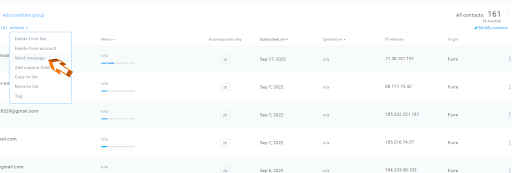
- Clean your List
If you encounter low engagement scores after split testing, segmenting, and resending, don’t be afraid to try other tactics. Make sure your list is clean. You should monitor subscriber activity and engagement levels on a regular basis. Those who do not engage should be removed or segmented if you want to improve your overall open rates.
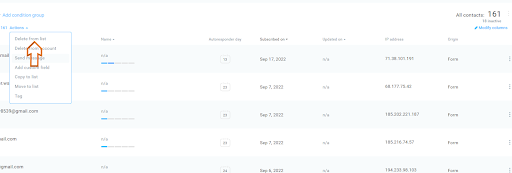
- Build awareness for your brand
Your brand should be spread across all marketing channels after the campaign has been completed and the final steps have been taken. For increasing brand awareness, there are a variety of common methods (such as social media marketing and events) as well as more unusual ones (such as giveaways and contests).
By building brand awareness, you can gain more followers and subscribers. You will be able to reach a larger, more engaged audience with this, which will benefit your upcoming campaigns.
It is more likely that you will gain more conversions and attract more leads if you have a broader and more diverse group of subscribers. Ultimately, this means more interest and revenue for your business.
Email marketing wrap up
There is no doubt that email marketing is a powerful driver of sales and revenue for your business, and that it has a greater reach and return on investment than any other marketing channel available.
Follow the steps outlined in this guide for a quick start to email marketing and campaign success.
There is also a way to make money by sending bulk emails, but this was mainly for setting up and sending emails to your own personal list. If you are interested in learning How To Earn $100 to $400 A Day Sending Simple Emails From Home Keep reading…
Let’s Recap the above is the traditional way to create an email list and send emails to it! this way, it typically costs about $5 per subscriber to add to your list… Now What if I told you there was a better way to make a list and send emails to that list at a cost of around $1 per Subscriber? Well, Hold on tight because there is and I’m using this platform and building my list I have made over $10000 and my list is just over 300000 subscribers. The cool part about my list is that they subscribed to the weight loss and make money online niche to 2 of the most profitable niches online. I can send up to 250000 emails to my list a day. that powerful marketing. If you would like to check this out click the button below it is free to join no Credit Card needed.

